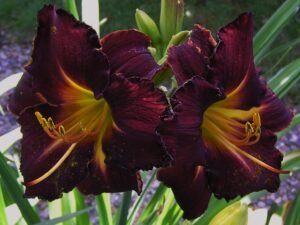The Fascinating World of Red Horses
When we think of horses, their stunning array of colors often captivates us, and one of the most striking hues is red. Red horses, which may include shades like chestnut and sorrel, have been admired for their beauty and grace throughout history. This article aims to explore the characteristics, popular breeds, care tips, and cultural significance of red horses, offering insights for both enthusiasts and those new to the equestrian world.
Understanding the Coloration
A. Genetics of Red Coat Color
The coat color of a horse is determined by its genetics. Red horse typically have a gene responsible for their unique coloring, often referred to as the chestnut gene. This gene influences the production of pigment in the hair, resulting in the vibrant red tones we see.
B. Various Shades of Red in Horses
Not all red horses look alike. They can vary in shade, with the two most common being:
- Chestnut: A rich, deep red with a golden hue.
- Sorrel: A brighter, lighter red that can sometimes appear almost orange.
C. Factors Affecting Coat Color
Several factors can influence a horse’s coat color over time. Age can lead to fading or graying, while health issues may also cause changes in pigmentation. Environmental factors, such as sun exposure, can affect the vibrancy of their coat as well.
Popular Breeds of Red Horses
A. Thoroughbred
The Thoroughbred is one of the most well-known horse breeds, often recognized for its speed and athleticism. These horses can come in various colors, including shades of red. Their historical significance as racehorses has made them a staple in equestrian sports.
B. Arabian
Arabians are renowned for their endurance and beauty. They often exhibit a stunning red coat that highlights their refined features. This breed has a rich history, playing a crucial role in shaping many modern horse breeds.
C. Quarter Horse
The American Quarter Horse is another popular breed known for its versatility and strength. This breed frequently showcases red variations, making it a favorite among ranchers and competitors alike.
D. Other Breeds with Red Variations
Several other breeds display beautiful red coats, including:
- Paint Horses: Known for their striking patterns and colors.
- Appaloosas: Often recognized by their unique coat patterns, they can also exhibit red shades.
The Cultural Significance of Red Horses
A. Mythology and Folklore
Red horses have long held a place in mythology and folklore. They are often depicted in literature and art as symbols of strength, power, and beauty. For instance, in various cultures, red horses are seen as bringers of good fortune or as mythical creatures in legends.
B. Symbolism of Red Horses in Different Cultures
Across various cultures, red horses symbolize different concepts, from war and bravery to love and passion. Their vibrant color often makes them stand out, making them prominent in ceremonial contexts.
C. Famous Red Horses in History
Throughout history, many notable red horses have captured the imagination of people. These horses have influenced culture, arts, and even politics, highlighting their importance beyond mere aesthetics.
Caring for Red Horses
A. Nutritional Needs
To maintain a healthy and vibrant coat, red horses require a balanced diet rich in nutrients. Essential components include:
- Quality Hay: Provides necessary fiber.
- Grains: Offers energy, particularly for working horses.
- Supplements: Specific vitamins and minerals, such as biotin and omega-3 fatty acids, can enhance coat health.
B. Grooming Practices
Regular grooming is vital for keeping a red horse’s coat in optimal condition. Here are some effective techniques:
- Brushing: Use a soft brush to remove dirt and loose hair.
- Bathing: Occasionally bathe to keep the coat shiny, using appropriate equine shampoos.
- Skin Care: Monitor for any skin conditions that may affect coat quality, especially in areas prone to irritation.
C. Health Considerations
Like all horses, red horses can face health issues, including skin conditions and allergies. Regular veterinary check-ups and vaccinations are essential to ensure their well-being.
Training and Riding Red Horses
A. Behavioral Traits
Red horses, like any other horses, have unique personalities. Some may be spirited and energetic, while others can be calm and gentle. Understanding their temperament is key to successful training.
B. Training Tips
When training red horse consider the following tips:
- Positive Reinforcement: Use treats and praise to encourage good behavior.
- Consistency: Maintain a consistent routine to help them understand commands.
C. Best Practices for Riding and Handling
When riding a red horse, it’s essential to build a bond of trust. Use gentle handling techniques, and ensure they are comfortable with both the rider and the environment.
Conclusion
Red horses are not just a feast for the eyes; they embody a rich history and cultural significance. Their unique characteristics, popular breeds, and the care they require make them a fascinating topic for horse enthusiasts. Whether you are a seasoned rider or a curious observer, the world of red horses offers endless exploration and appreciation. Consider visiting local farms or equestrian events to connect with these beautiful animals and engage with the horse community.
Additional Resources
To further explore the world of red horses, consider the following resources:
- Books: Look for literature on equine care and specific horse breeds.
- Online Articles: Websites dedicated to equestrian knowledge can provide deeper insights.
- Local Clubs: Join horse clubs or attend events to meet fellow horse enthusiasts and learn more.














Post Comment